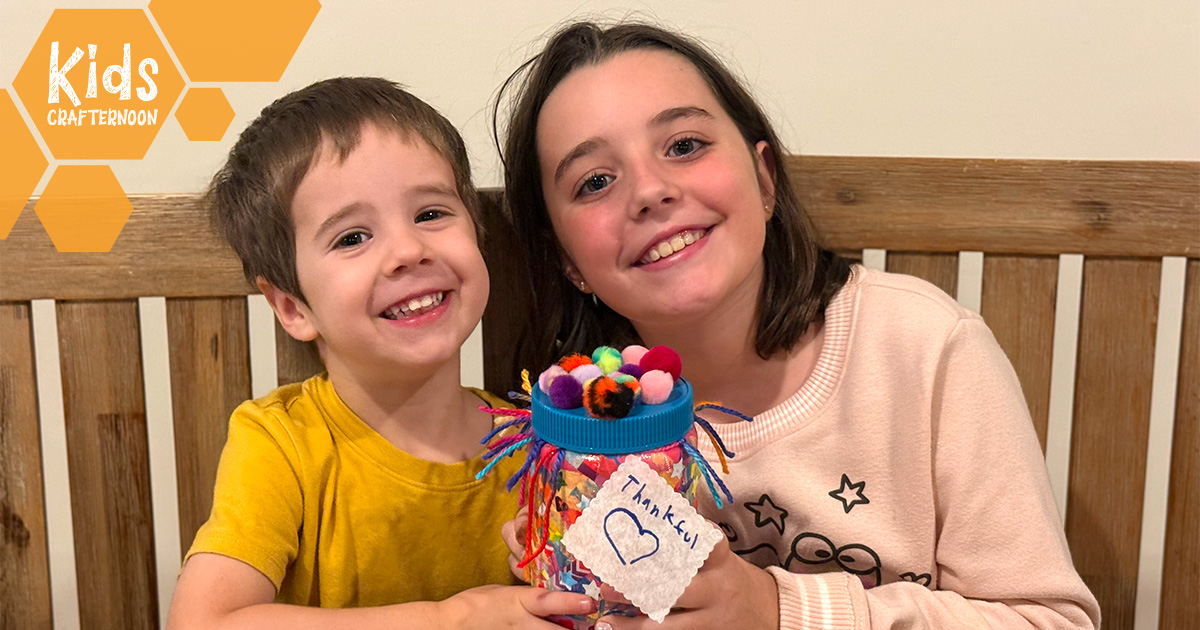- 855.224.8655
- Schedule a Tour

Did you know November is National Gratitude Month? It’s the perfect time to show thankfulness, especially with our children and families. The concept can be tricky for younger children, but as they grow, they become more understanding and aware of their feelings. Teaching children about gratitude can inspire them to be kindhearted, empathetic, and compassionate adults.
What is gratitude? Gratitude is much more than just learning good manners. It’s a positive emotion you can express when feeling thankful for something or someone. It can be as simple as enjoying a sunny day or fresh laundry. Identifying these moments of sincere appreciation may inspire your child to reflect on past examples too. Discussing the concept of gratitude is a great way to build an optimistic perspective toward future experiences.
People who feel grateful can exhibit higher resilience, forgiveness, and positive emotions.
Model gratitude.
Children can learn the most from our actions and vocabulary. It's much harder for children to understand the concept of gratitude if not practiced daily. Try pausing and expressing aloud what you're feeling. You can say something small like, "I'm so thankful I get to play outside with you today. I love sharing these moments with you." Expressing your feelings will make it easier for your child to understand gratitude.
Give praise and recognition.
After discussing the purpose of gratitude, praise your child when you hear them thanking others or expressing thankfulness on their own. Birthdays and holidays offer a natural opportunity to encourage appreciation for gifts, events, or family time. Follow up with a meaningful activity by writing or drawing on thank you cards together to share the gratitude you feel.
Incorporate gratitude activities.
Moments of gratitude can be sprinkled throughout your day. With practice, highlighting positive experiences and emotions will become a welcome, enjoyable part of your routine. Try these ideas:
- Reflect at bedtime. Sharing your gratitude at bedtime is a terrific way to deepen your connection while ending the day on a good note. This can be a simple conversation about moments in the day that brought you joy, made you laugh, or sparked a smile or warm feeling.
- Create a gratitude board. Introduce your child to the idea of gratitude with visual elements. This activity helps build awareness and appreciation for all they have. Start with a corkboard or magnetic board. Discuss the concept and add personal drawings or pictures from magazines and photo albums. Maybe you love snow days or the pumpkin patch. Perhaps your favorite food deserves a spot! The possibilities are endless. Change it often to reflect different seasons of life.
- Practice serving others. Teaching your children the importance of volunteering in the community can help demonstrate thankfulness and a sense of humility. Try volunteering at your local animal shelter, donating to a food bank, or baking cookies for first responders.
- Start a gratitude journal. Give each family member a turn sharing three things they are thankful for. Write them down with the date. Return to the shared journal often to record memories! This activity will help your child focus on the good things they experience.
- Add to a gratitude jar. Start by writing down one thing you are thankful for on a piece of paper. It can be a single word or an entire sentence. Add it to the jar and do this every time you or a family member has a spark of gratitude. Then, each month, get together and read every note to reflect on all the happy moments you’ve shared.
- Feeling inspired? Create your own! Our friends, Noah (3) and Grace (9), decorated their own gratitude jar to bring some personalization to the experience. You can do the same thing using any craft materials you might already have at home and a plastic container, a mason jar with a lid, or a vase. Let your creativity lead the way.
- Feeling inspired? Create your own! Our friends, Noah (3) and Grace (9), decorated their own gratitude jar to bring some personalization to the experience. You can do the same thing using any craft materials you might already have at home and a plastic container, a mason jar with a lid, or a vase. Let your creativity lead the way.
- Take a gratitude walk. A walk can increase happiness and blood flow in your body which is energizing! Grab the family and stroll around the neighborhood, park, or local hiking trail. Discuss the cool things you see. Or strike up an introspective conversation about their favorite things. Explore what they are thankful for to cultivate a positive mindset.
We are grateful for YOU!
Thank you for being part of our school community.
By teaching our children to appreciate what they have and what others can do for them, we're helping them become healthier, happier adults. Try these activities or let them inspire your own and build an intentional gratitude practice together. If you have an idea, tag us on social media to share
